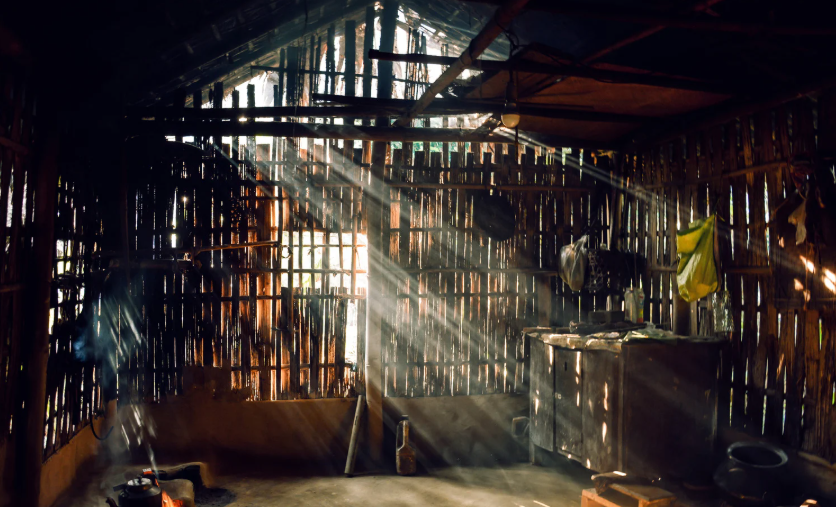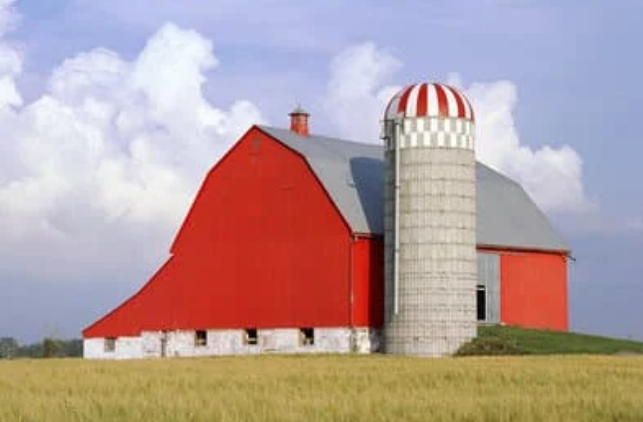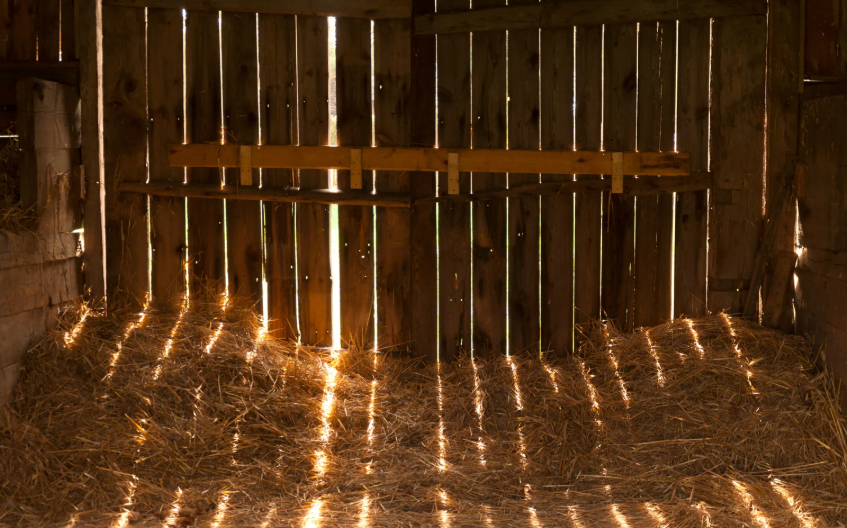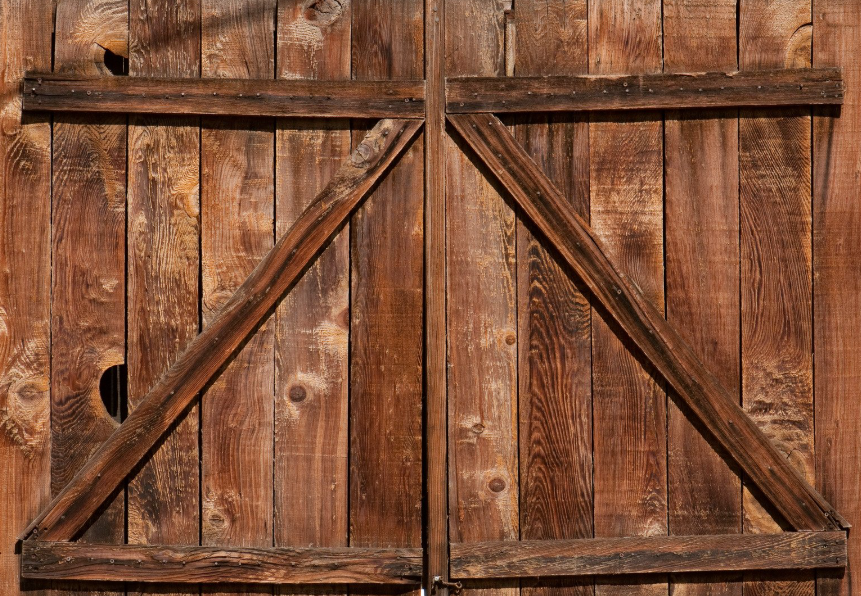Antique barns remain one of the richest sources of high-quality reclaimed softwood and hardwood in North America. Properly salvaged material can supply long, straight timbers for structural reuse, wide plank floorboards for finish work, and weathered live-edge sheathing for paneling and cladding. Successful projects start with disciplined documentation, species identification, and realistic yield and value estimates that account for age, fasteners, prior repairs, insect activity, and dismantling logistics.
Appraising Deconstructed Barns Case StudyOur team appraises at least 40-50 barns each year from around the United States, sometimes with significant value on the secondary market, especially when the wood is from the vintage or antique classification. We are seeing more of these potential projects as owners discover the economic value of the salvaged lumber.
Our latest project is a mid-19th-century four-level structure in the Northeast United States with a footprint of about 40 by 60 feet. The first and second levels are fully decked, the third and fourth are shell, and the roof is modern tin over cedar shakes. Framing is mixed softwood, consistent with Eastern White Pine and Eastern Hemlock. Powder-post beetle activity is present in portions of the frame.
In appraisal practice, “antique” barn wood is generally material that originates from structures or fabric that are at least 100 years old at the time of valuation, while “vintage” barn wood is older, discontinued, or period-specific material that is not yet 100 years old. Later additions and replacements from roughly the 1920s through the late 20th century, for example machine-sawn pine deck boards added in a 1950 repair or a 1970s loft rebuild.

One: Age and provenance. Antique: Original fabric from barns built circa 1925 or earlier. The following c.1850 lumber would qualify as antique because the timbers, decking, and sheathing are original to construction.
Two: Manufacturing and tool marks.
Antique: Original fabric from barns built circa 1925 or earlier. The following c.1850 lumber would qualify as antique because the timbers, decking, and sheathing are original to construction.
Vintage stock more often shows uniform band-sawn or modern circular-sawn kerf, wire nails or pneumatic fasteners, and second-growth ring patterns.
Three: Species signals. Antique Northeast frames are often Eastern White Pine and Hemlock with occasional early hardwood sills. In the South, true heart pine appears frequently in pre-1900 structures. Vintage phases may introduce different species consistent with 20th-century supply, for example Douglas Fir shipped by rail.
Four: Condition patterns. Antique wood can exhibit oxidation, mineral staining, and patina consistent with long service. Vintage material often has more uniform color, standardized dimensions, and fewer historic fasteners, but may show modern coatings or treatments.
One: Market positioning. Antique stock typically includes a premium when length, section size, and ring density are superior, and when historic surface character is intact. Vintage stock sells well for consistency and volume but usually at lower per-board-foot pricing.
Two: Use class. Designers often specify antique for visible structural and feature elements and vintage for back-of-house framing, secondary flooring, or where uniformity is preferred.
Three: Donation and reporting. When supporting fair market value, we identify whether each lot is antique or vintage and disclose mixed lots.

Using conservative assumptions that fit the photographs and field notes, the following volumes were reasonably recoverable and confirmed by the deconstruction contractor. Board feet are calculated as thickness in inches times width in inches times length in feet divided by 12.
- Structural timbers : Posts at 8 by 8 and tie beams at 8 by 10 dominate, with 4 by 6 knee braces and perimeter sill plates. Estimated volume is about 5,099 board feet.
- Roof framing : Pairs of 3 by 5 rafters at 24 inches on center yield about 1,860 board feet.
- Floor framing : Two levels of 3 by 8 joists yield about 2,480 board feet.
- Floor decking :First and second floors carry 1-inch pine deck boards for a total of about 4,800 board feet.
- Exterior sheathing :Vertical 3/4-inch live-edge boards cover an estimated 5,800 square feet of wall and gable area for about 4,350 board feet.
- The combined recoverable volume is roughly 18,589 board feet. Because powder-post beetle damage is visible, grading, culling, and de-nailing will remove a portion of the stock from premium resale. A uniform 15 percent adjustment is applied across categories to reflect that risk, which equates to about an 85 percent salvage yield on the better pieces.

The following suggestions come from our deconstruction contractor colleagues. Pre-planning is essential. Start with measured drawings, photographs, and a species map. Probe critical members for insect galleries and hidden rot. Test a representative set of boards and beams for metal and set realistic defect allowances. Decide where each class of material will be sold before dismantling begins, since market channels differ for long structural stock, wide plank flooring, and weathered siding. Maintain load lists and chain of custody so buyers can verify provenance. Because these were donated for an IRS tax deduction, the owner must preserve basis records and engage with firms that produce IRS Qualified Appraisal.
Species mixes vary with geography, period of construction, and local industry. The notes below focus on barns of similar vintage to the case study and on material that commonly tests well for reuse.
- Alabama: Heart pine and other Southern yellow pines for frames and decking, cypress on the coast, white and red oak secondary.
- Alaska: Sitka spruce and western hemlock for frames and siding in the southeast, white spruce inland; limited barn stock overall.
- Arizona: Ponderosa pine and Douglas fir framing, juniper or cedar for posts, mixed spruce at elevation.
- Arkansas: Shortleaf pine and mixed oaks in the Ozarks, cypress in Delta counties.
- California: Douglas fir framing, redwood siding and trim in coastal counties, sugar pine and incense cedar in the Sierra and interior.
- Colorado: Douglas fir and Engelmann spruce frames, ponderosa pine rafters and decking.
- Connecticut: Eastern white pine and hemlock frames and siding, white oak sills and floors, pre-blight American chestnut appears in earlier barns.
- Delaware: Southern yellow pine and tulip poplar siding, white and red oak in frames, cypress near tidal areas.
- Florida: Heart pine and cypress dominate; “Dade County pine” appears in the south in older structures.
- Georgia: Heart pine widely used for frames and floors, cypress and yellow pine on the coast and lowlands, oak secondary.
- Hawaii: Agricultural buildings use ōhia posts locally, plus imported Douglas fir and redwood; termite exposure common.
- Idaho: Douglas fir and western larch frames, lodgepole and ponderosa pine rafters and siding.
- Illinois: Mixed hardwood frames with white oak sills, white pine or fir rafters and siding, cottonwood appears locally.
- Indiana: White and red oak frames, tulip poplar and pine for siding and decking.
- Iowa: Pine and fir shipped by rail for frames and rafters, white oak sills, cottonwood and elm locally.
- Kansas: Cottonwood and oak locally, pine and fir shipped in for rafters and boards.
- Kentucky: Yellow poplar and white oak common in tobacco barns, pine rafters and decking, some chestnut pre-blight.
- Louisiana: Cypress and longleaf heart pine, with pine decking; moisture exposure dictates grading.
- Maine: Eastern white pine and hemlock frames and siding, spruce rafters, oak floors and sills.
- Maryland: Tulip poplar and pine siding, white oak and red oak frames, cypress on the coastal plain.
- Massachusetts: Eastern white pine and hemlock frames and siding, white oak sills, pre-1900 chestnut appears in some elements.secondary.
- Michigan: White pine and hemlock frames, tamarack in some sills, maple or oak floors.
- Minnesota: White pine, tamarack, and spruce, with pine or fir rafters and decking.
- Mississippi: Heart pine and cypress dominate, with oak secondary.
- Missouri: White and red oak frames in the north and east, shortleaf pine and oak in the Ozarks.
- Montana: Douglas fir heavy timbers, western larch and spruce rafters, lodgepole pine purlins.
- Nebraska: Cottonwood locally, pine and fir shipped by rail for frames and rafters.
- Nevada: Douglas fir and pine shipped in, pinyon or juniper for posts, mining timbers often repurposed.
- New Hampshire: Eastern white pine and hemlock frames and siding, spruce rafters, occasional chestnut pre-blight.
- New Jersey: Pine and hemlock framing with tulip poplar siding, oak sills, scattered chestnut in earlier barns.
- New Mexico: Ponderosa pine and Douglas fir framing, round-log viga and latilla roof work in traditional structures, spruce at elevation.
- New York: Eastern white pine and hemlock dominate, spruce rafters, oak sills, scattered chestnut in older barns.
- North Carolina: Longleaf and loblolly pine frames and floors, tulip poplar siding inland, cypress and pine on the coast, oak and chestnut in the mountains.
- North Dakota: Pine and fir shipped by rail for frames and rafters, cottonwood locally, spruce in the Turtle Mountains.
- Ohio: White oak and mixed hardwood frames, tulip poplar and pine siding, pine or fir rafters.
- Oklahoma: Post oak and mixed oaks for frames, pine and fir shipped for rafters and boards, Osage orange commonly used for fence posts.
- Oregon: Douglas fir heavy timbers, western red cedar siding and shingles, hemlock and spruce in coastal ranges.
- Pennsylvania: White oak and chestnut in early frames, hemlock and white pine widely used, tulip poplar siding common.
- Rhode Island: Eastern white pine and hemlock, oak sills and floors, limited chestnut in early work.
- South Carolina: Heart pine dominates frames and decking, cypress on the coast, oak secondary.
- South Dakota: Ponderosa pine in the west, pine and fir shipped for plains barns, cottonwood locally.
- Tennessee: Heart pine and Southern yellow pines, tulip poplar and oak, hemlock in the mountains.
- Texas: East Texas longleaf and loblolly pine, bald cypress along the Gulf, cedar posts in Hill Country, Douglas fir shipped to the Panhandle.
- Utah: Douglas fir, Engelmann spruce, and pine frames, pronounced checking from arid climate.
- Vermont: Eastern white pine and hemlock frames and siding, spruce rafters, maple or oak floors; occasional chestnut early.
- Virginia: Tulip poplar and pine siding, white and red oak frames, chestnut in pre-blight structures, hemlock in the highlands.
- Washington: Douglas fir primary for frames, western red cedar siding and trim, hemlock and spruce near the coast.
- West Virginia: Hemlock and pine frames, oak and poplar elements, chestnut appears in older barns.
- Wisconsin: White pine and hemlock frames, tamarack sills in wet ground, spruce rafters.
- Wyoming: Douglas fir and lodgepole pine frames, spruce rafters; dry climate preserves cores.
Market and grading considerations
Species identification affects value, but length, cross section, straightness, and defect frequency often matter more. Mixed softwood frames in the Northeast and Rockies sell consistently when lengths exceed 12 feet and faces are sound. Heart Pine trades at a premium so long as growth ring density is tight and resin content is high. Weathered live-edge siding realizes better pricing when it remains thick and stable enough to re-mill. Powder-post beetle galleries in hardwoods call for careful culling. When insect damage is limited to sapwood in softwood species, planing can often rescue the stock.

Antique barns can yield tens of thousands of board feet across structural timbers, floor systems, and sheathing. A disciplined survey, a conservative salvage yield, and species-specific pricing produce reliable fair market value conclusions that hold up in negotiations or charitable donations. With this framework, owners, deconstruction contractors, and appraisers can plan recoveries, set budgets, and document value with confidence.


